How to Create a Classic Wooden Letterbox
Creating a classic wooden letterbox is not just a project; it's an opportunity to blend craftsmanship with personal style. Imagine the satisfaction of crafting something beautiful that not only serves a purpose but also enhances the curb appeal of your home. In this article, we'll guide you step-by-step through the process, from selecting the right wood to applying the final finish. Whether you’re a seasoned DIY enthusiast or a beginner looking to pick up a new skill, this guide will equip you with the knowledge and confidence to tackle your letterbox project.
First things first, why choose wood? Wood has a timeless charm that can’t be replicated by plastic or metal. It’s not just about aesthetics; wood is durable, can withstand various weather conditions, and, when treated properly, can last for decades. With a classic wooden letterbox, you’re not just building a receptacle for your mail; you’re creating a piece of art that tells a story—your story. So, let’s roll up our sleeves and dive into the world of woodworking!
When it comes to selecting the perfect wood for your letterbox, there are several factors to consider. You want a material that is not only visually appealing but also capable of withstanding the elements. Some popular choices include:
- Cedar: Naturally resistant to rot and insects, cedar is a fantastic option for outdoor projects.
- Redwood: Similar to cedar, redwood offers beautiful grain patterns and durability.
- Pine: Affordable and easy to work with, pine can be treated to enhance its weather resistance.
Think about the grain patterns and color variations as well. A well-chosen wood can elevate your letterbox from ordinary to extraordinary. Additionally, consider how easy the wood is to work with; softer woods are generally easier to cut and shape, making them ideal for beginners.
Before you start your project, it’s crucial to gather all the necessary tools and materials. This will save you time and frustration down the road. Here’s a quick list of what you’ll need:
- Measuring tape
- Miter saw or hand saw
- Wood glue
- Screws
- Sandpaper
- Wood stain or sealant
Having the right tools at your disposal will make the process smoother and more enjoyable. If you’re unsure about any of the tools, don’t hesitate to consult your local hardware store or look for tutorial videos online. Remember, safety first! Always wear protective gear when using power tools.
Accurate measurements are the backbone of any woodworking project. A small error can lead to a big problem later on. Start by sketching out your design and taking precise measurements of each component. Use a measuring tape and a square to ensure that your cuts are straight and true. When it comes to cutting, there are different methods you can use:
- Miter Saw: Perfect for angled cuts, this tool will help you achieve clean edges.
- Hand Saw: If you prefer a more traditional approach, a hand saw can do the trick with a bit of practice.
Don’t rush the cutting process. Take your time to ensure each piece fits perfectly. Remember, woodworking is as much about patience as it is about skill!
Once your letterbox is assembled, it’s time to think about the finishing touches. The way you finish your letterbox will not only enhance its appearance but also protect it from the elements. Sanding is an important step; it smooths out any rough edges and prepares the surface for staining or sealing. Choose a finish that complements the wood and your home’s style. Options include:
- Stains: These come in various colors and can enhance the natural beauty of the wood.
- Sealants: These protect against moisture and UV damage, prolonging the life of your letterbox.
Applying a finish is like putting the final brush stroke on a masterpiece. It’s the moment when your hard work truly shines!
Now that your letterbox is complete, why not add a personal touch? Personalization can make your letterbox stand out in the neighborhood. Consider adding your family name, house number, or even decorative elements like carvings or stencils. This not only adds charm but also makes it uniquely yours. Think of it as putting your signature on a piece of art!
Q: How long does it take to build a wooden letterbox?
A: The time it takes can vary based on your experience level and the complexity of your design, but generally, you can complete it in a weekend.
Q: Do I need to treat the wood before using it?
A: Yes, treating the wood with a sealant or stain will help protect it from weather damage.
Q: Can I customize the size of my letterbox?
A: Absolutely! You can adjust the dimensions based on your needs and preferences.

Choosing the Right Wood
When it comes to crafting a classic wooden letterbox, the choice of wood is paramount. Not only does the right wood enhance the aesthetic appeal of your letterbox, but it also plays a crucial role in its durability and functionality. Imagine your letterbox as the first impression of your home; you want it to be welcoming, sturdy, and beautiful. So, what should you consider when choosing the perfect wood?
First and foremost, think about weather resistance. Your letterbox will be exposed to the elements, from scorching sun to torrential rain. Some woods, like cedar and redwood, naturally resist moisture and decay, making them excellent choices for outdoor projects. On the other hand, softer woods, while easy to work with, may not stand the test of time when exposed to harsh weather conditions.
Next, consider the grain patterns. The grain of the wood can dramatically affect the overall look of your letterbox. A tight, straight grain can give a sleek, modern appearance, while a more pronounced, wavy grain can evoke a rustic charm. Think about what style resonates with you and how it will fit into your home’s exterior. For instance, if you live in a traditional neighborhood, a classic oak or pine might blend seamlessly, whereas a more contemporary setting could benefit from a striking walnut or mahogany.
Another factor to keep in mind is the ease of workability. Some woods are notoriously difficult to cut and shape, which can lead to frustration during the building process. Hardwoods like oak or maple, while durable, may require specialized tools and techniques. In contrast, softer woods like pine or fir are typically easier to handle, making them ideal for beginners. If you're just starting out, you might want to stick to these more forgiving options.
To summarize, here are the key factors to consider when choosing your wood:
- Weather Resistance: Opt for woods like cedar or redwood for outdoor durability.
- Grain Patterns: Choose a grain that complements your home’s style.
- Ease of Workability: Consider softer woods for a smoother crafting experience.
Lastly, don't forget about the environmental impact of your wood choice. Look for sustainably sourced options or reclaimed wood to minimize your carbon footprint. Not only will this decision benefit the planet, but it can also add a unique character to your letterbox, telling a story of its own.
In conclusion, selecting the right wood for your letterbox is not just about aesthetics; it’s about creating a sturdy, lasting piece that reflects your personal style and withstands the test of time. Take your time to research and choose wisely, and you’ll be well on your way to crafting a beautiful letterbox that you’ll be proud to display.

Essential Tools and Materials
When embarking on the journey of creating a classic wooden letterbox, having the right tools and materials is absolutely crucial. Think of it like preparing for a grand adventure; you wouldn’t set off without your map and compass, right? In the same way, ensuring you have everything you need will not only make the process smoother but also more enjoyable. So, what exactly do you need for this project? Let’s break it down.
First off, the most important material is, of course, the wood. You’ll want to choose a sturdy type that can withstand the elements. Cedar and redwood are popular choices due to their natural resistance to decay. However, if you’re looking for something more budget-friendly, pressure-treated pine can also do the trick. Just keep in mind that it might require more maintenance over time.
Now, let’s talk tools. Here’s a quick rundown of what you’ll need:
- Miter Saw: Perfect for making those precise angled cuts.
- Hand Saw: A good alternative if you prefer a more traditional approach or don’t have access to power tools.
- Drill: Essential for creating holes for screws and other fasteners.
- Screwdriver: To secure everything together with ease.
- Measuring Tape: Because accurate measurements are key!
- Sandpaper: For smoothing out edges and surfaces.
- Wood Glue: Adds an extra layer of strength to your joints.
In addition to these tools, you’ll also need some hardware. This includes screws, nails, and possibly brackets for added support. It’s amazing how such small items can make a huge difference in the overall durability of your letterbox. Imagine building a beautiful structure only for it to fall apart because of poor fastening! So, don’t skimp on quality here.
Lastly, let’s not forget about the finishing materials. You’ll want to protect your hard work with some quality stains or sealants. These not only enhance the wood’s natural beauty but also shield it from the elements. Think of it as putting on a raincoat before stepping out into a storm. You wouldn’t head out without protection, would you?
In summary, gathering the essential tools and materials is the first step in your letterbox crafting adventure. By ensuring you have everything on hand—from the right type of wood to the necessary tools and finishing materials—you set yourself up for success. So, roll up your sleeves, gather your gear, and get ready to create something truly special!
Q: What type of wood is best for outdoor use?
A: Cedar and redwood are excellent choices due to their natural resistance to decay. Pressure-treated pine is a more economical option.
Q: Do I need power tools to build a letterbox?
A: While power tools make the process easier and quicker, hand tools can also be used effectively if you prefer a more traditional approach.
Q: How do I protect the wood from weather damage?
A: Applying a good quality stain or sealant will help protect the wood from moisture and UV rays, prolonging the life of your letterbox.

Measuring and Cutting Techniques
When it comes to crafting your classic wooden letterbox, accuracy is key. You might be wondering, why is measuring so important? Well, think of it this way: if you’ve ever tried to assemble furniture from a flat-pack, you know that even a tiny miscalculation can lead to a wobbly end product. The same principle applies here. To ensure that all the pieces fit together seamlessly, you need to start with precise measurements.
Before you even pick up a saw, grab your tape measure and a pencil. Start by measuring the dimensions of your letterbox. Consider how much mail you expect to receive; do you want it to be large enough for packages? A good rule of thumb for a standard letterbox is to aim for dimensions around 18 inches wide, 8 inches deep, and 10 inches tall. But feel free to adjust these dimensions based on your personal needs and preferences.
Once you have your measurements, it’s time to transfer those dimensions onto your wood. Use a straight edge or a square to draw straight lines where you plan to cut. This is where the magic happens! You’ll want to ensure your lines are clear and visible. A good trick is to use a darker pencil or a chalk line for longer cuts. Remember, measure twice, cut once—this old adage can save you from making costly mistakes.
Now, let’s talk cutting techniques. Depending on the tools you have, there are various methods to achieve those clean edges you’re aiming for. If you’re using a power saw, like a miter saw, set it up on a stable surface. Adjust the angle for any beveled cuts you might need, and always wear safety goggles. When making the cut, let the saw do the work—don’t force it. This will not only give you a cleaner cut but also keep you safe.
If you’re opting for hand saws, the technique changes slightly. It’s all about maintaining control. Start your cut slowly to create a groove, then use long, steady strokes to cut through the wood. A hand saw can be just as effective as a power saw if used correctly. However, be prepared for a bit more effort, as hand saws require more physical work.
Here’s a quick comparison of the two cutting methods:
| Tool | Advantages | Disadvantages |
|---|---|---|
| Miter Saw | Quick, precise cuts; ideal for angled cuts | Requires electricity; can be expensive |
| Hand Saw | Portable; no electricity needed; cheaper | More physical effort; slower cuts |
After cutting, it’s essential to check each piece for fit. Place them together as you go to make sure everything aligns perfectly. If you notice any rough edges, don’t fret! A little sanding can go a long way in ensuring a smooth finish, which we’ll discuss more in the finishing touches section. Remember, the goal is to create a letterbox that not only looks good but also functions well for years to come.
- What type of wood is best for a letterbox? Cedar and redwood are great choices due to their natural resistance to weather.
- How do I ensure my cuts are straight? Use a straight edge or a square to guide your saw, and consider using clamps to secure your wood.
- Can I personalize my letterbox? Absolutely! You can add names, numbers, or even decorative elements to make it uniquely yours.
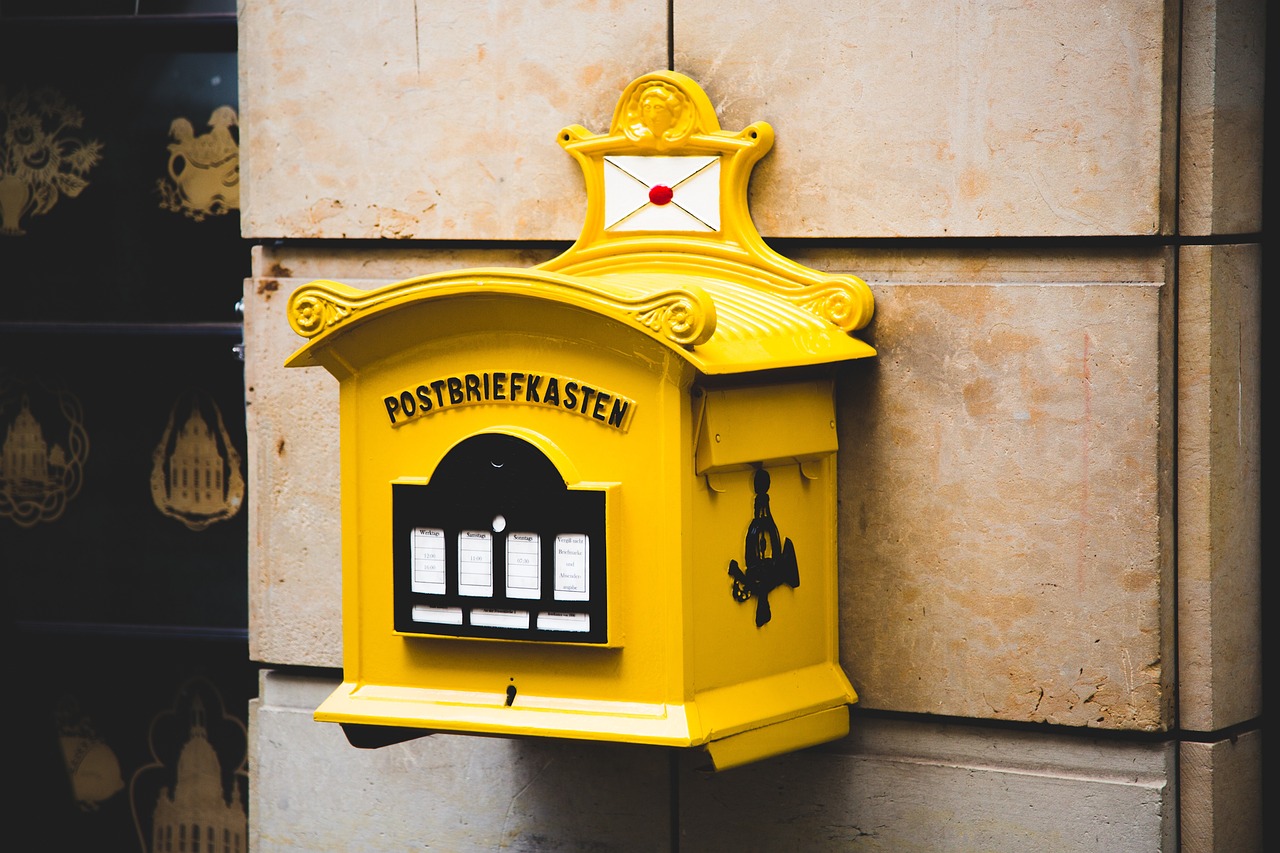
Using a Miter Saw
When it comes to crafting a classic wooden letterbox, precision is key, and that's where a miter saw shines. This powerful tool is designed to make angled cuts with remarkable accuracy, making it a favorite among both amateur and seasoned woodworkers. But how do you set it up and use it safely? Let’s dive into the essentials!
First and foremost, before you even plug in your miter saw, it’s crucial to ensure that you have a clean and organized workspace. A clutter-free area not only helps in maintaining focus but also minimizes the risk of accidents. Once you’re ready, you’ll want to adjust the saw to the correct angle for your cuts. Most letterbox designs require 45-degree angles for the corners, so be sure to double-check your measurements. Remember, measuring twice and cutting once is a mantra worth living by!
To use the miter saw effectively, follow these steps:
- Position the Wood: Place your wood securely against the fence of the saw. Ensure it’s flat and stable to prevent any slippage during the cut.
- Adjust the Blade: If you need a specific angle, adjust the miter gauge accordingly. Most saws have clear markings that make this process straightforward.
- Safety Gear: Don’t forget to wear safety goggles and ear protection. The noise and debris can be a hazard, so better safe than sorry!
- Make the Cut: With both hands on the saw, lower the blade smoothly and steadily. Let the saw do the work; don’t force it through the wood.
After making your cuts, take a moment to inspect the edges. They should be clean and precise, allowing for a seamless assembly later on. If you notice any rough spots, a quick pass with sandpaper can smooth them out before you proceed. The beauty of using a miter saw is that it not only saves time but also enhances the overall quality of your project. The clean cuts will help ensure that your letterbox not only looks great but also functions well.
In conclusion, mastering the use of a miter saw can elevate your woodworking game significantly. With practice, you’ll find that making those angled cuts becomes second nature. Just remember to prioritize safety, double-check your measurements, and soon enough, you’ll be crafting letterboxes that are not only functional but also stunning additions to your home.
Q: Can I use a miter saw for other woodworking projects?
A: Absolutely! A miter saw is versatile and can be used for various projects, including furniture making, trim work, and more.
Q: What type of blade should I use for cutting hardwood?
A: For hardwood, it’s best to use a fine-toothed blade designed specifically for cutting hardwoods. This will help achieve cleaner cuts.
Q: Is it safe to use a miter saw without prior experience?
A: While it's possible, it’s highly recommended to seek guidance or practice under supervision until you are comfortable with the tool.
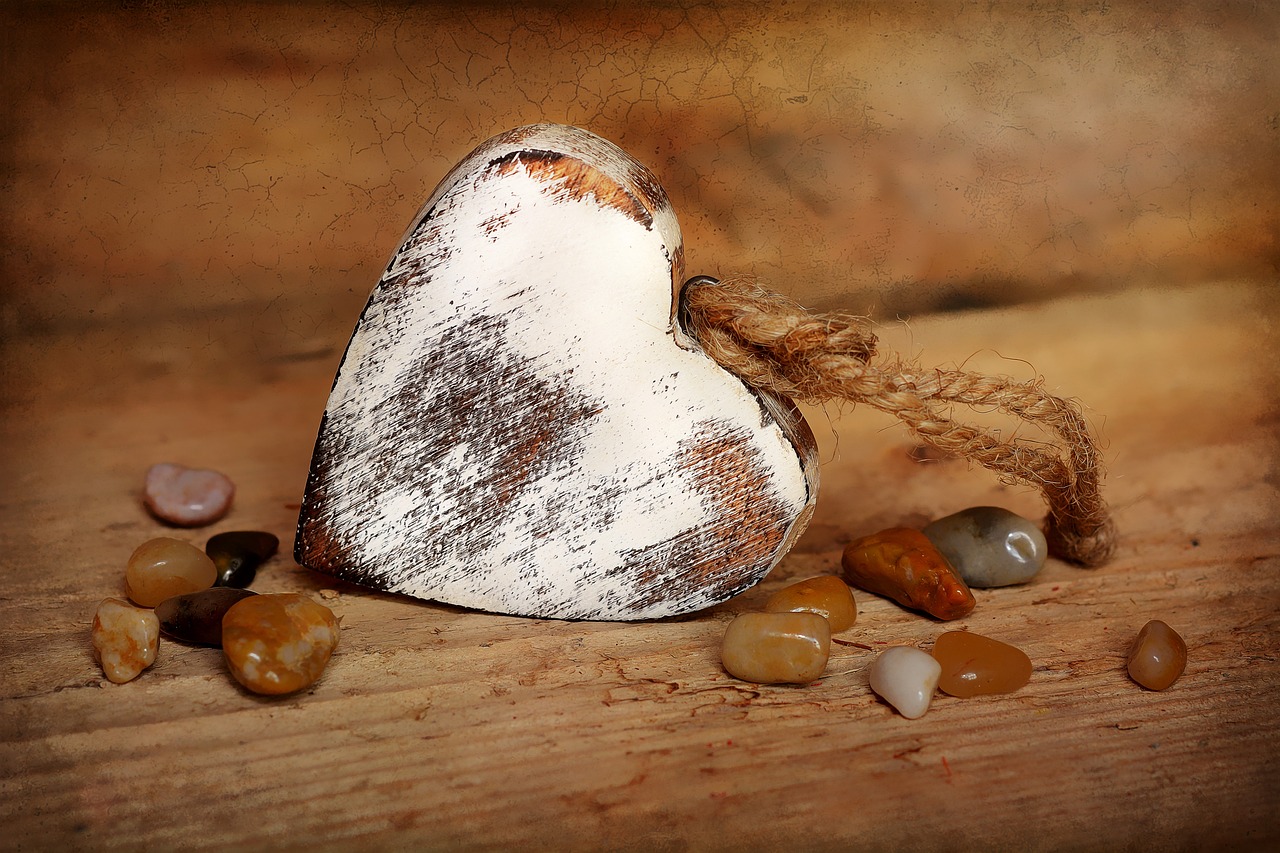
Hand Saw Alternatives
When it comes to crafting your classic wooden letterbox, not everyone has access to power tools, and that’s perfectly okay! Hand saws can be a fantastic alternative, offering both versatility and a sense of traditional craftsmanship. Imagine the satisfaction of creating something beautiful with your own hands, using tools that have been trusted for generations. But how do you ensure precision and control while using these manual tools? Let’s dive into some tips and techniques that will transform your hand saw into a reliable companion for your project.
First off, it’s crucial to choose the right type of hand saw for the job. There are several options available, each serving a specific purpose:
- Panel Saw: Ideal for straight cuts on smaller pieces of wood, perfect for your letterbox sides.
- Back Saw: Excellent for making precise cuts, especially if you’re working on joints.
- Copings Saw: Great for intricate cuts and curves, allowing for creative designs on your letterbox.
Once you’ve selected your saw, the next step is to focus on your technique. To achieve clean cuts, start by marking your measurements accurately. Use a square to draw a straight line where you intend to cut. This will serve as your guide, ensuring that you stay on track. When you begin cutting, it’s essential to maintain a steady hand and a consistent angle. Remember, slow and steady wins the race! Rushing can lead to mistakes, and nobody wants a wobbly letterbox.
Additionally, using a saw with sharp teeth is vital. Dull blades can cause the wood to splinter and make your cuts uneven. Take a moment to check your saw before you start; a little maintenance can go a long way. If you find that your saw isn’t cutting smoothly, consider sharpening it or investing in a new one. The effort you put into your tools will reflect in the quality of your work.
Another handy tip is to secure your wood properly before cutting. Using clamps can provide stability, preventing the wood from moving around as you saw. This is especially important for longer pieces, where any slight movement can lead to crooked cuts. If you don’t have clamps, you can use your body to hold the wood steady, or even ask a friend for a helping hand!
Lastly, don’t forget to practice! If you’re new to using hand saws, take some scrap wood and practice your cuts. This will help you get a feel for the tool and build your confidence before you tackle your letterbox project. Remember, every craftsman started somewhere, and with each cut, you’ll improve your skills.
Q: Can I really achieve the same results with a hand saw as I would with power tools?
A: Absolutely! While power tools can make the job quicker, hand saws allow for precision and a personal touch. With practice, you can achieve excellent results with hand saws.
Q: How do I know which hand saw to choose?
A: It depends on the type of cuts you need to make. For straight cuts, a panel saw is ideal. For more intricate work, consider a coping saw.
Q: Is using a hand saw more time-consuming?
A: It can be, but the time spent is often worth it for the craftsmanship and satisfaction you gain from creating something by hand.

Assembling the Letterbox
Once you have meticulously cut all the pieces for your classic wooden letterbox, it’s time to bring everything together in a beautifully crafted assembly. This phase is where your vision starts to take shape, and it’s crucial to ensure that each part fits together seamlessly. Think of this process as putting together a puzzle—each piece has its place, and when they fit just right, the final picture is stunning.
Before diving into assembly, it’s essential to gather all the necessary items. You’ll need wood glue, screws, a drill, and clamps. Having everything at hand will save you from unnecessary trips back and forth to your toolbox. Trust me, nothing disrupts the creative flow like searching for a missing screw! When you’re ready, start by laying out the pieces on a flat surface, ensuring you can visualize how they will come together.
Begin with the base of the letterbox, which is the foundation for everything else. Apply a generous amount of wood glue to the edges where the sides will attach to the base. Align the side pieces carefully, making sure they are flush with the edges of the base. Once aligned, use clamps to hold everything in place while the glue sets. This step is crucial because it ensures a sturdy structure. If you skip this, you might find your letterbox wobbling or falling apart later on.
Next, it’s time to attach the back panel. This is where you’ll want to pre-drill holes to avoid splitting the wood. Use a drill bit that is slightly smaller than your screws for the best fit. Insert the screws through the back panel into the sides, securing everything tightly. Remember, the back panel not only adds stability but also prevents any mail from slipping out the back. It’s like the backbone of your letterbox!
After securing the back panel, it’s time to attach the front panel. This is where you can get creative! If you’re planning on adding a decorative front or a slot for mail, make sure to measure twice and cut once. The front panel should be flush with the sides, just like the back. Once again, use screws to secure it in place, ensuring everything is aligned properly.
Now, let’s talk about the roof. Depending on your design, you may want a sloped roof for rain runoff or a flat one for a modern touch. If you’re opting for a sloped roof, cut two identical pieces at an angle, ensuring they fit snugly together at the top. Attach these pieces to the sides of the letterbox using screws, and don’t forget to add glue for that extra strength. A well-attached roof will keep your mail dry and protected from the elements.
Finally, take a step back and admire your handiwork. Make any adjustments if necessary, and ensure everything is secure. The assembly phase is not just about putting pieces together; it’s about creating a functional piece of art that will serve you well for years to come. Once you’re satisfied with the assembly, allow the glue to cure fully before moving on to the finishing touches.
Q: How long should I let the glue dry before moving on to finishing touches?
A: It’s best to let the glue cure for at least 24 hours to ensure a strong bond.
Q: Can I use nails instead of screws for assembly?
A: Yes, you can use nails, but screws provide a stronger hold and are easier to remove if adjustments are needed.
Q: What if my letterbox is wobbly after assembly?
A: Check all joints and ensure they are tight. You may need to add additional screws or clamps to stabilize it.
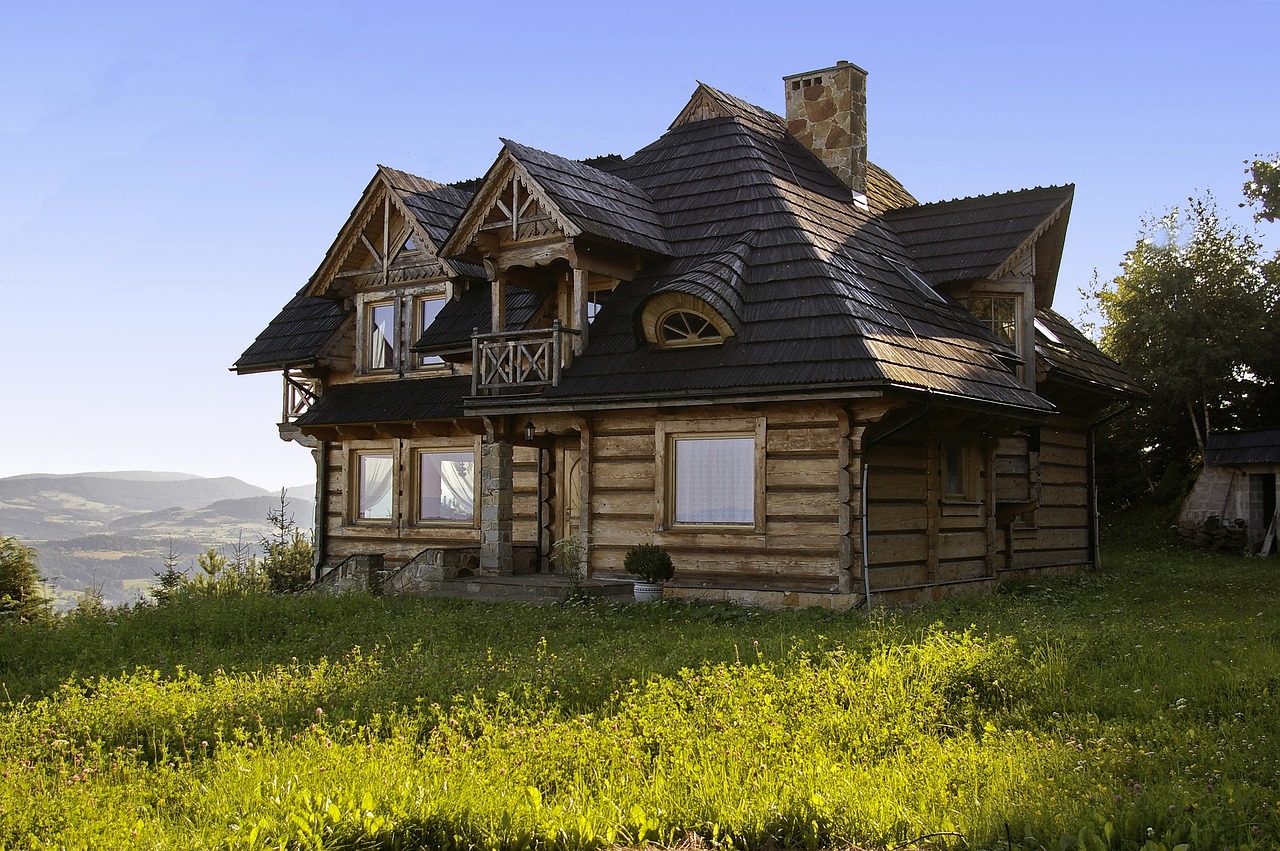
Finishing Touches
Now that you've crafted the structure of your classic wooden letterbox, it's time to focus on the that will truly make it stand out. Finishing isn't just about aesthetics; it's also about protection. The right finish can enhance the natural beauty of the wood while providing a barrier against the elements, ensuring that your letterbox remains beautiful and functional for years to come. So, what should you consider when finishing your letterbox?
First, think about the type of finish you want to apply. There are several options available, each with its unique benefits:
- Stains: These can add color while allowing the wood grain to show through. They come in a variety of shades, so you can choose one that complements your home.
- Sealants: These are essential for protecting your wood from moisture and UV rays. A good sealant will prevent warping and fading over time.
- Paint: If you're looking for a bold look, paint can provide a vibrant finish. However, it may require more maintenance than stains or sealants.
To achieve the best results, start with sanding. Use a fine-grit sandpaper to smooth out any rough edges and surfaces. This step is crucial because it ensures that the finish adheres properly and looks even. After sanding, wipe down the wood with a damp cloth to remove any dust particles.
Next, apply your chosen finish using a brush or cloth, depending on the type of finish. If you’re using a stain, consider applying it with a rag for better control. Always follow the manufacturer's instructions regarding drying times and the number of coats required. For sealants, a minimum of two coats is typically recommended for optimal protection.
After the finish has dried, inspect your work. If you notice any imperfections, don’t hesitate to sand lightly and apply another coat. This attention to detail is what elevates your letterbox from good to great.
Lastly, let’s talk about personalization. Adding a personal touch to your letterbox can make it uniquely yours. Consider incorporating your family name, house number, or even decorative elements that reflect your personality. You could use stencils or wood-burning techniques to achieve this. Not only does personalization enhance the overall look, but it also helps your letterbox stand out in the neighborhood.
Q: How do I choose the right finish for my wooden letterbox?
A: Consider the climate in your area and the look you want to achieve. Stains enhance the wood grain, while sealants provide protection. If you prefer a vibrant look, paint might be the way to go.
Q: How often should I reapply the finish?
A: It depends on the type of finish and the weather conditions. Generally, it's a good idea to inspect your letterbox annually and reapply the finish if you notice signs of wear or fading.
Q: Can I use leftover paint or stain from other projects?
A: Yes, as long as the product is still in good condition and suitable for outdoor use. Just ensure that the color complements the overall design of your letterbox.
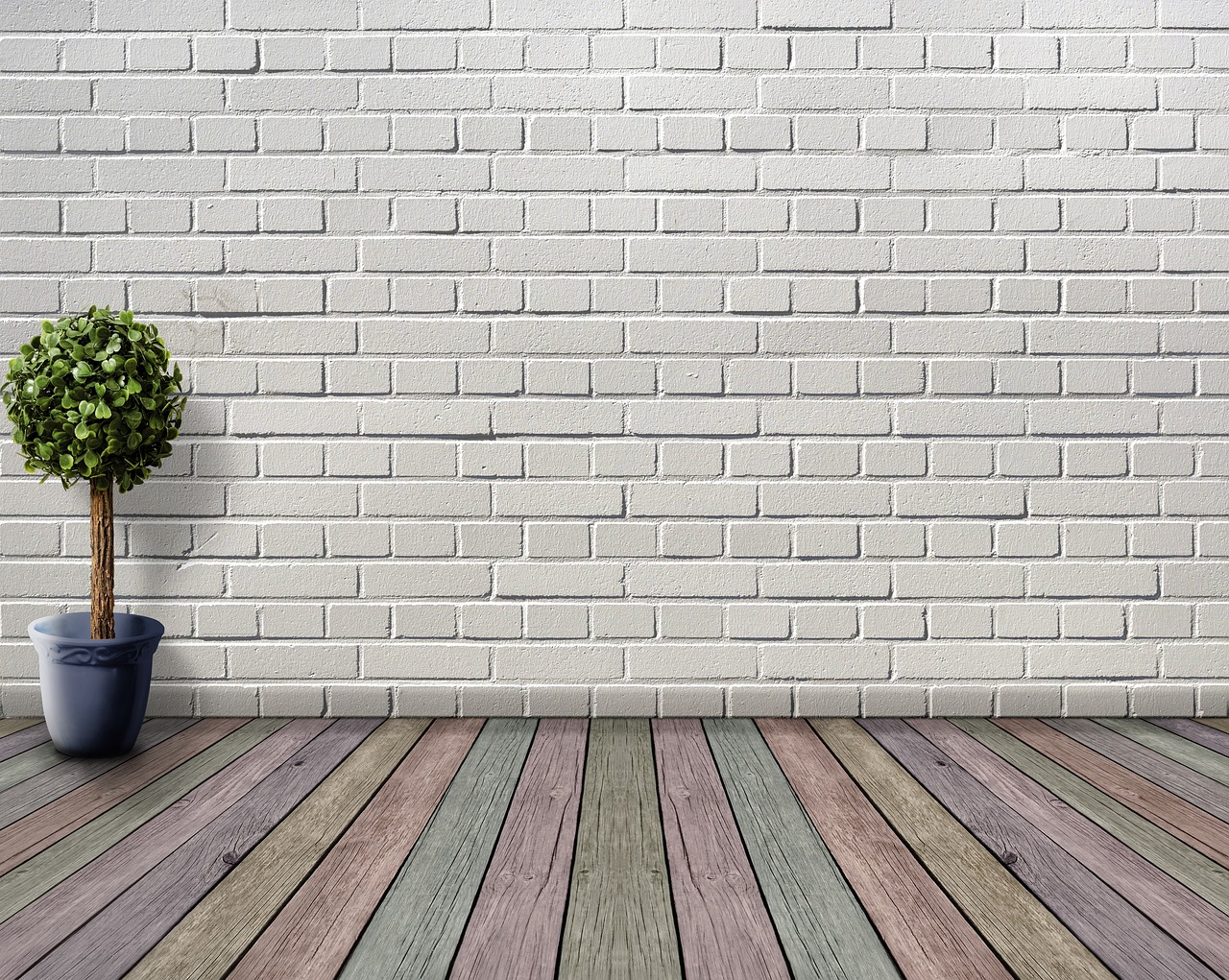
Choosing the Right Finish
When it comes to crafting your classic wooden letterbox, choosing the right finish is like picking the perfect outfit for a special occasion. It not only enhances the appearance but also protects the wood from the elements. Think of your letterbox as a canvas; the finish is the paint that brings it to life. There are several factors to consider when selecting a finish, including durability, aesthetic appeal, and ease of application. Let's dive into the different types of finishes available, so you can make an informed decision that suits your style and the environment where your letterbox will reside.
Firstly, you have the option of stains. Stains come in a variety of shades and can enhance the natural grain of the wood, providing a beautiful, rich color. They are great for those who want to maintain the wood's natural look while adding some character. However, keep in mind that stains typically require a sealant on top to protect against moisture and UV damage. A stain can be applied with a brush or cloth, allowing for a smooth finish. It's essential to test the stain on a scrap piece of wood first, as the final color can vary based on the wood type.
On the other hand, if you're looking for a more robust protection, sealants are your best bet. Sealants create a barrier that protects the wood from water, dirt, and other environmental factors. They come in both matte and glossy finishes, allowing you to choose how shiny you want your letterbox to be. A glossy finish can give your letterbox a sleek, modern look, while a matte finish offers a more rustic feel. Some popular types of sealants include polyurethane, varnish, and lacquer. Each has its own set of pros and cons, and understanding these can help you make the right choice.
Here’s a quick comparison of some common finishes:
| Finish Type | Durability | Aesthetic | Application Ease |
|---|---|---|---|
| Stain + Sealant | Moderate | Natural look, enhances grain | Moderate |
| Polyurethane | High | Glossy or satin finish | Moderate |
| Varnish | High | Warm, amber tone | Moderate |
| Lacquer | High | High gloss, smooth finish | Challenging |
In addition to stains and sealants, you might also consider oil finishes. These penetrate deep into the wood, providing excellent protection while enhancing the grain. They are particularly beneficial for outdoor projects, as they repel water and resist UV damage. However, oil finishes may require more frequent reapplication compared to other finishes, so keep that in mind if you're looking for something low-maintenance.
Ultimately, the choice of finish depends on your personal preference and the conditions your letterbox will face. If your letterbox will be exposed to harsh weather, opt for a durable sealant. If you’re looking to showcase the wood’s natural beauty, a stain coupled with a sealant might be the way to go. Remember, the finish can make or break the overall look of your letterbox, so take your time to choose wisely.
- What is the best finish for outdoor wooden furniture? - A high-quality sealant or oil finish is recommended for outdoor furniture to withstand the elements.
- Can I use a stain without a sealant? - While you can use a stain alone, it’s advisable to apply a sealant for better protection against moisture and UV rays.
- How often should I reapply the finish? - This depends on the type of finish and the exposure to elements; generally, every 1-3 years is a good rule of thumb for outdoor items.
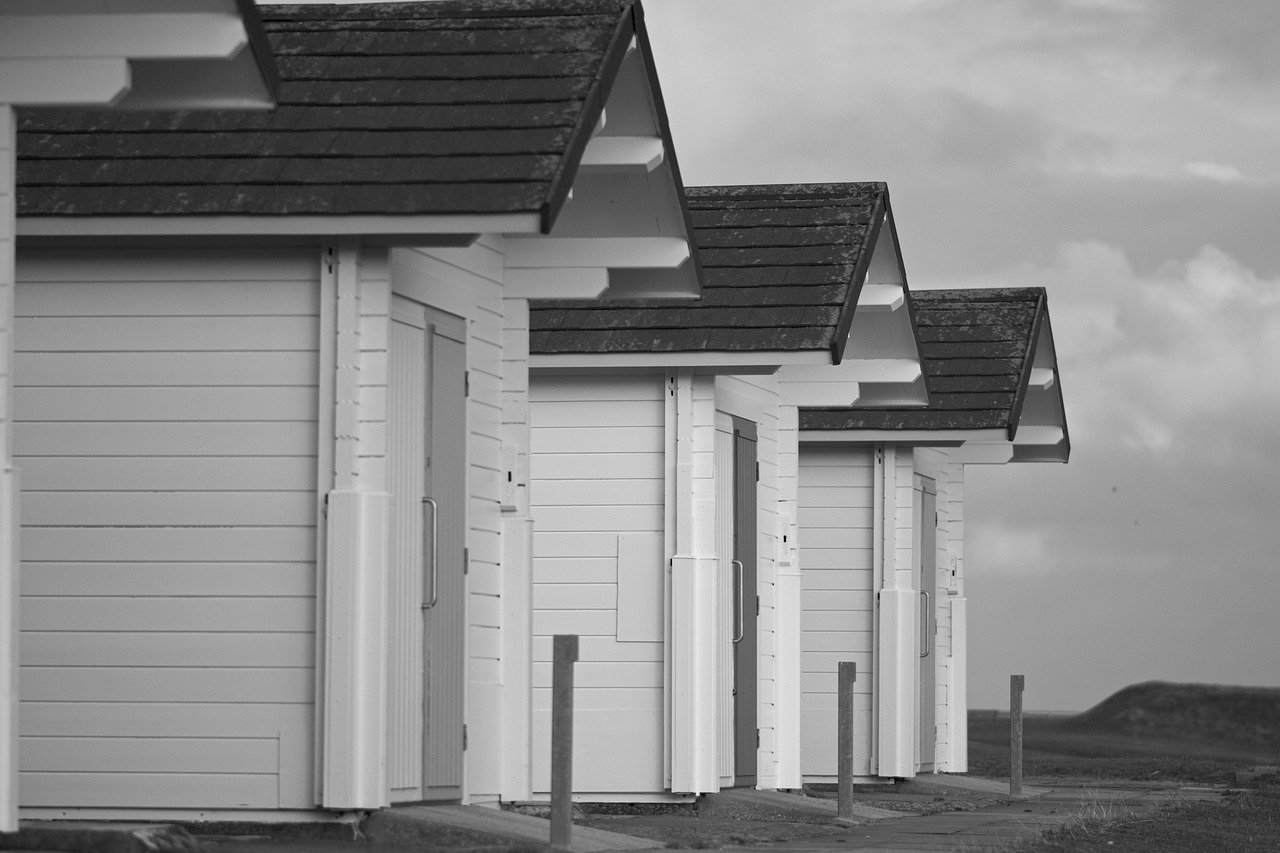
Personalizing Your Letterbox
When it comes to your letterbox, why settle for ordinary when you can create something that truly reflects your personality? Personalizing your letterbox not only adds a unique touch to your home but also makes it easier for visitors and delivery personnel to find you. Think of it as the cherry on top of your home’s curb appeal! So, how can you make your letterbox stand out? Let’s dive into some creative ideas!
First off, consider incorporating your family name or house number. This is not just functional but also adds a warm, welcoming feel. You can opt for traditional wooden letters or go for a modern metal look. Whatever your style, make sure it’s legible from a distance. You might be surprised how a simple nameplate can transform the look of your letterbox!
Another fantastic way to personalize your letterbox is by adding decorative elements that reflect your interests or hobbies. For example, if you’re a gardening enthusiast, why not adorn your letterbox with some small, weather-resistant plant pots? Or, if you’re into sports, you could paint your letterbox in your favorite team’s colors. The sky's the limit! Here are a few ideas to get those creative juices flowing:
- Painted Designs: Use weather-resistant paint to create beautiful patterns or scenes.
- Stickers and Decals: Easy to apply and remove, these can be seasonal or themed.
- Custom Artwork: If you’re artistically inclined, hand-painting a design can be a real showstopper!
Don’t forget about the practical side of personalization. Installing a small solar-powered light above your letterbox not only enhances visibility at night but can also be a stylish addition. Plus, it’s eco-friendly! You can even find lights that come in various designs to match your letterbox's theme.
Lastly, consider the surrounding area. Personalizing your letterbox can extend beyond just the box itself. Think about adding a decorative post or even a small garden around it. A few flowers or a small border of stones can create a cohesive look that ties everything together. After all, your letterbox is a part of your home’s personality, and it deserves to shine!
In summary, personalizing your letterbox is a fun and rewarding project that can enhance the overall look of your home while making it uniquely yours. So grab your tools, get creative, and let your letterbox tell your story!
Q: What materials are best for personalizing a wooden letterbox?
A: You can use weather-resistant paint, stickers, or even wood-burning tools for engraving. Just make sure whatever materials you choose can withstand the elements!
Q: How can I ensure my personalization lasts?
A: Using high-quality sealants and weather-resistant materials will help protect your designs from fading or peeling due to weather exposure.
Q: Can I change my letterbox design with the seasons?
A: Absolutely! You can easily switch out decorations, like seasonal flowers or themed stickers, to keep your letterbox fresh and exciting throughout the year.
Frequently Asked Questions
- What type of wood is best for a wooden letterbox?
When creating a wooden letterbox, it's essential to choose a durable wood that can withstand various weather conditions. Cedar and redwood are popular choices due to their natural resistance to moisture and insects. If you're looking for a more budget-friendly option, pine can also work well but may require additional sealing to protect it from the elements.
- Do I need power tools to build a letterbox?
While power tools can make the process quicker and easier, they are not strictly necessary. If you prefer a more traditional approach or don't have access to power tools, hand saws can be used effectively. Just ensure you take your time to measure accurately and make straight cuts for the best results.
- How can I ensure my measurements are accurate?
Accurate measurements are crucial for a well-fitted letterbox. Always use a tape measure and double-check your dimensions before cutting. A good tip is to mark your measurements clearly on the wood, and if possible, use a square to ensure your lines are straight. Practice makes perfect, so don’t rush this step!
- What finishing options should I consider?
Finishing your letterbox not only enhances its appearance but also extends its lifespan. You can choose from a variety of stains and sealants. If you want to showcase the natural beauty of the wood, a clear sealant might be best. However, if you prefer color, opt for a stain that complements your home. Always remember to apply a weather-resistant finish for outdoor use!
- Can I personalize my letterbox?
Absolutely! Personalizing your letterbox is a great way to add a unique touch. You can paint your house number, carve your family name, or even add decorative elements like stencils or designs that reflect your style. Just ensure that whatever you add is weather-resistant to maintain its look over time.



















